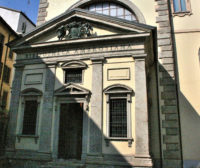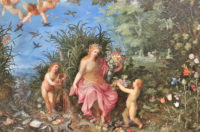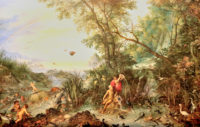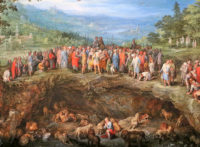Founded bv Cardinal Federico Borromeo in 1609 and built by Fabio Mangone and Francesco Maria Richini, the Ambrosian Library is one of the most remarkable demonstrations of the great Federico’s genius, of his love for humanistic culture and magnificence, things to which he passionately and shrewdly devoted himself.
The building, which, overlooks Piazza Pio IX, was built around 1832 on the site of the demolished church of St. Maria della Rosa. The “Ambrosian” may be loosely divided into two parts: the art gallery and the library which preserves treasures of elevated culture, among which codexes, illuminated manuscripts, incunabulas and books on many varied subjects. Among these treasures can be seen Leonardo’s famous “Codice Atlantico”, which after various misadventures, fell into the hands of the Marquis Arconati, who, in 1630, donated it to the “Ambrosian”.
The institute has had a difficult existence, it suffered French plundering and heavy bomb damage during the air raids of 1943. The “Ambrosian” was reconstructed, on the wish of the art gallery has been rearranged, and contains, in its bright halls, masterpieces in general, but above all those of Lombardic painters.
It is sufficient to remember that Leonardo’s “Portrait of a Musician” is present together with works of his school, among which the portrait, presumed to be that of Beatrice d’Este, by Dc Predis, the “Holy Family” by Luini, and other works by Lombardic artists. Painters from the Vth. to the VUIth. centuries are abundantly present.
Sculpture is represented with the dismantled parts of the tomb of Gastone di Foix by Bambaia, whose lying statue is found in the Ancient Art Museum in the Sforzesco Castle. Raffacllo’s famous ’car- tone ’ of the “Athens School’’ is arranged under thick glass plate in a room especially prepared for it.
































